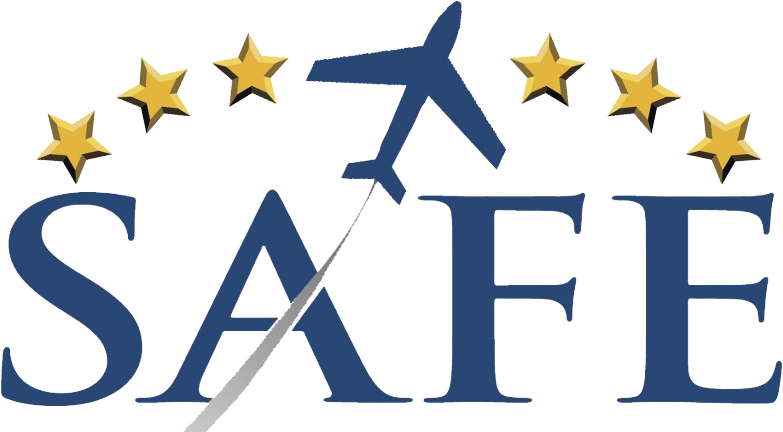Mike Patey very bravely took full respnsibility for his public crash of Draco this week: “this is on me, I made a bad decision.” We need to respect and honor that (rare) honesty. But Mike also clearly laid down the challenge for every pilot to practice better risk management and learn from his personal tragedy with enhanced risk-management awareness.
Personal honesty and accurate self-assessment (which Mike modeled beautifully after the crash) are probably the most underdeveloped human skills; especially in aviation – “let me die first rather than dishonor myself.” This lack of honesty can clearly get us in trouble quickly in aviation. Even a great pilot flying a super-powerful and capable machine can get caught by bad “mental math.” How can we protect ourselves from being caught in the same trap?
 One proven antidote to risk taking and over confidence has been advocated by some of the bravest and best aviators; Chuck Yeager wrote that fear was always a motivating force to exhaustively study systems and carefully prepare for each flight. A Vietman pilot I know (with 125 combat missions) advocates “nurturing fear” as one of the best pre-flight actions to defeat complacency and clearly surface the risks in a plan. It is critical to carefully remind yourself before every flight that mishandling aviation can be embarassing, expensive and painful.
One proven antidote to risk taking and over confidence has been advocated by some of the bravest and best aviators; Chuck Yeager wrote that fear was always a motivating force to exhaustively study systems and carefully prepare for each flight. A Vietman pilot I know (with 125 combat missions) advocates “nurturing fear” as one of the best pre-flight actions to defeat complacency and clearly surface the risks in a plan. It is critical to carefully remind yourself before every flight that mishandling aviation can be embarassing, expensive and painful.
 This “premeditation of evils” or “negative visualization” was practiced by the ancient Greek Stoics to avoid disappointment before every contemplated action. And though this totally gloomy outlook can quickly turn you into Eyore, there is value in reminding yourself, “I don’t want to end up like Draco here,” and exploring safer alternate courses of action. A take-off briefing with all the stated possible problems and reactions is a great example of “negative visualization.” Keeping the worst in mind (stoic attitude) makes us work more diligently to calculate a safe path and mitigate risks.
This “premeditation of evils” or “negative visualization” was practiced by the ancient Greek Stoics to avoid disappointment before every contemplated action. And though this totally gloomy outlook can quickly turn you into Eyore, there is value in reminding yourself, “I don’t want to end up like Draco here,” and exploring safer alternate courses of action. A take-off briefing with all the stated possible problems and reactions is a great example of “negative visualization.” Keeping the worst in mind (stoic attitude) makes us work more diligently to calculate a safe path and mitigate risks.
We all have a natural cognitive bias to rapidly “normalize” every life experience through repetition and stereotyping. This creates the two-fold problem of not properly seeing a “clear and present danger” through “predictive perception,” but also pushing harder to get the same excitement and adrenaline buzz. Without specific pessimism applied in every operation, we can easily forge blindly into risky circumstances with our baked in optimism. For example, remind ourselves that every take-off has an equal chance of engine failure and have a plan ready. (Though this seems like the simplist operation in flying, it accounts for 28% of fatalities.) And if we are educators, it is necessary to both encourage and carefully develop risk management in our pilots during training.
 A “safety culture” of standard safe operating limitations and trusted advice is another great antidote to risky behavior. This fights “normalizing risk” with known normative standards and sometimes all we need is “what are you thinking” from a trusted friend to lift the illusion of invulnerability and surface the risks to which we can become blind to. Fly safely out there (and often)
A “safety culture” of standard safe operating limitations and trusted advice is another great antidote to risky behavior. This fights “normalizing risk” with known normative standards and sometimes all we need is “what are you thinking” from a trusted friend to lift the illusion of invulnerability and surface the risks to which we can become blind to. Fly safely out there (and often)
 Still time to register for the SAFE CFI-PRO™ workshop Oct 2/3 at AOPA. This is open to educators at every level (even working on your CFI?) There are four National “FAA CFIs of the Year” among the presenters!
Still time to register for the SAFE CFI-PRO™ workshop Oct 2/3 at AOPA. This is open to educators at every level (even working on your CFI?) There are four National “FAA CFIs of the Year” among the presenters!
Join SAFE to support our safety mission of generating aviation excellence in teaching and flying. Our amazing member benefits pay back your contribution (1/3 off your ForeFlight subscription)! Our FREE SAFE Toolkit App puts required pilot endorsements and experience requirements right on your smartphone and facilitate CFI+DPE teamwork. Our CFI insurance was developed by SAFE specifically for CFIs (and is the best value in the business).
